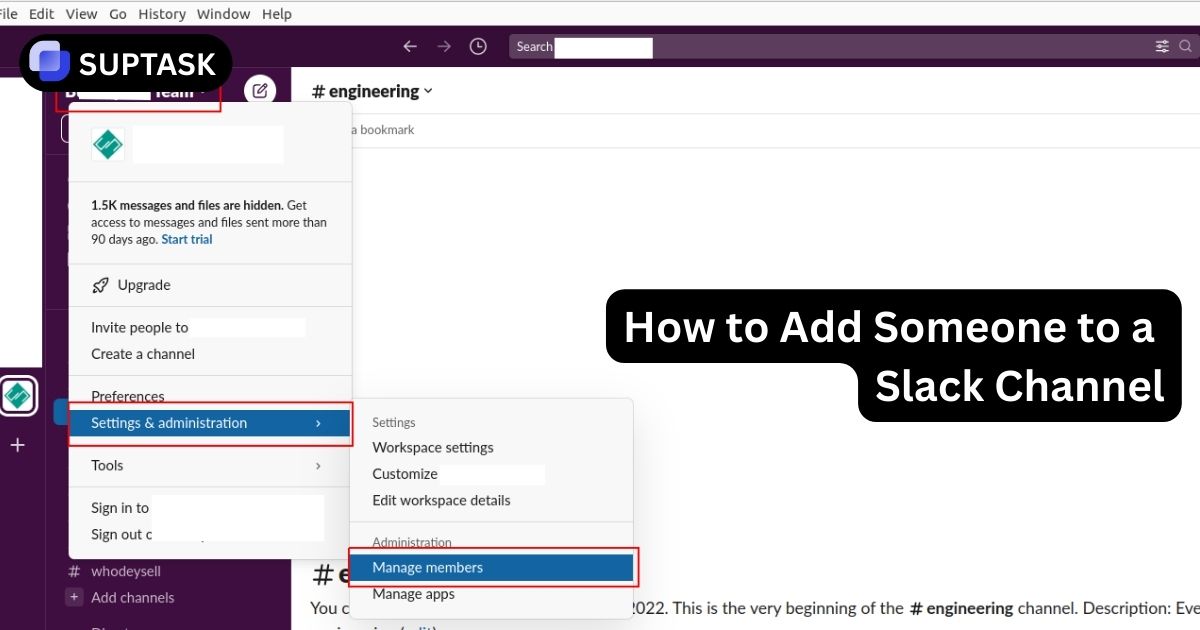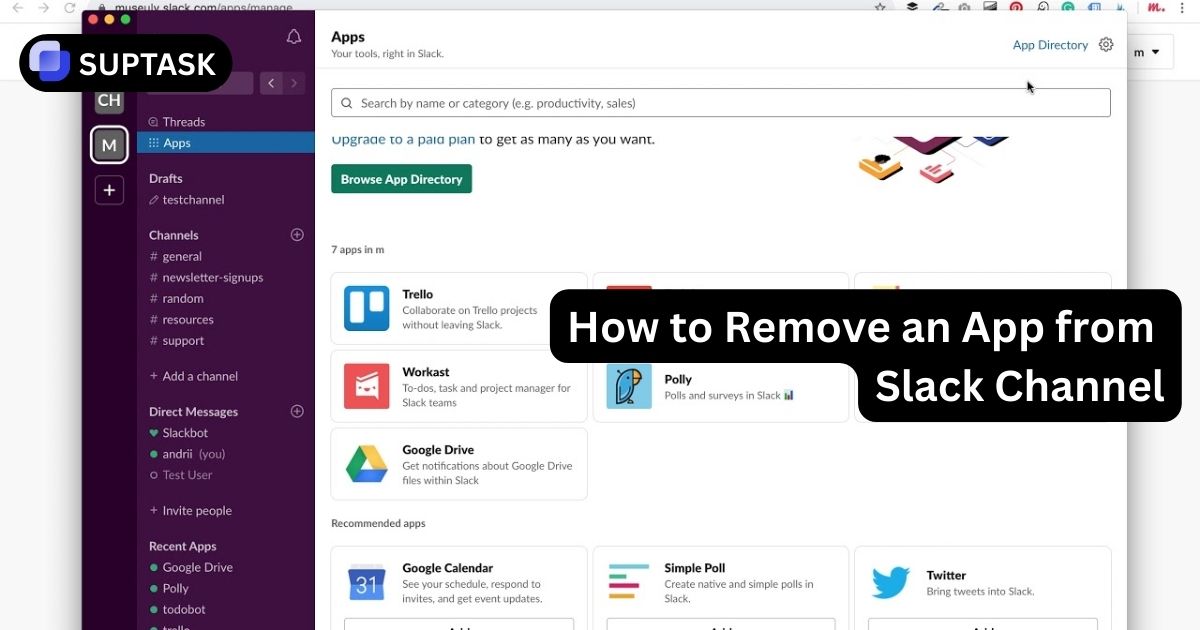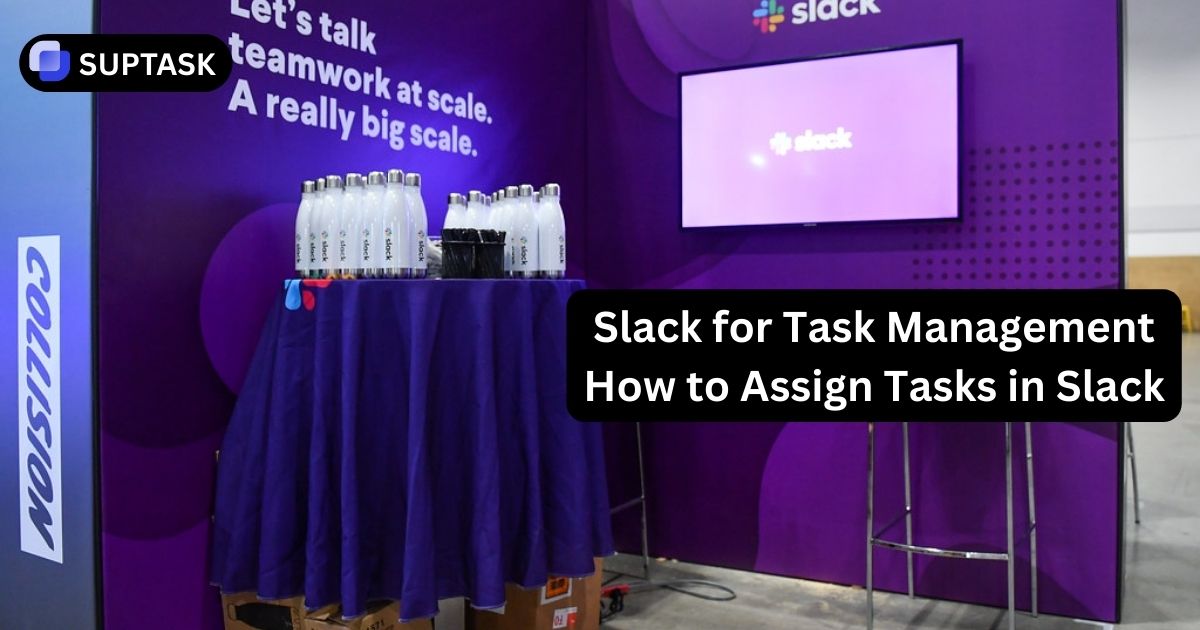In today's ever-changing technological landscape, businesses and customers face new challenges. To efficiently address these challenges, help desk tickets are crucial in providing support.
But what exactly are these help desk tickets and how can understanding examples of them improve support? In this blog post, we will explore different examples of help desk tickets for various teams, such as HR and DevOps, discuss their importance in streamlining customer support and communication, enhancing the user experience, and delve into help desk best practices for managing these tickets.
By the end of this post, you will have a comprehensive understanding of help desk tickets and their significance in modern businesses.
Key Takeaways
- Help desk tickets play a crucial role in businesses by ensuring effective customer support, facilitating communication, and enhancing the overall user experience.
- By implementing effective strategies such as organizing, prioritizing, utilizing templates, and monitoring progress, businesses can enhance customer satisfaction and optimize their support procedures.
- When selecting help desk software, it's important to assess the features, scalability, and pricing plans of various solutions to determine the best value for your money.
Examples of Help Desk Tickets
.webp)
Help desk tickets serve as a vital link between support teams and customers, facilitating the swift resolution of any issues encountered by users. These tickets can take on different formats, including:
- Service requests
- Incidents
- Problems
- Change requests
- And many more
Having a good grasp of the different types of help desk tickets allows support agents to efficiently handle a diverse range of customer issues. This deep understanding not only enhances the level of support provided but also empowers support teams to effectively resolve problems, benefiting both customers and the business.
All of the examples below can be used in the Suptask Slack application, leveraging its Slack ticketing system for efficient issue management. Try it now for free!
1. Service Request Tickets
Service request tickets cover simple inquiries about products or services that don't need immediate attention.
Using a service ticket template can make it easier to manage these types of requests, which might include things like resetting passwords, requesting software installations, and troubleshooting hardware.
Support agents, also known as service reps, can improve the support process and enhance communication and user experience by familiarizing themselves with service request tickets. This allows them to provide prompt and accurate assistance to customers, streamlining the entire support workflow.
Utilizing a comprehensive ITSM ticketing tool can further improve the process of managing service requests by automating common workflows and offering customizable templates.
Example: A new employee request WiFi access.
Dive deeper into what service request is vs an incident.
2. Incident Tickets
When urgent issues arise with products or services, incident tickets are raised to ensure prompt resolution and prevent customer dissatisfaction. Support teams must be skilled in addressing these tickets and promptly resolving the incidents.
Example: A customer can't access the web server.
The process for managing incident tickets generally involves:
- Ticket creation
- Assignment
- Triage
- Troubleshooting and resolution
- Escalation
- Closure
Efficient handling of incident tickets is crucial for businesses to minimize downtime and ensure strong customer satisfaction.
3. Problem Tickets
Problem tickets address the underlying issues that cause incident tickets and often require technical staff intervention. The primary goal of these tickets is to identify and resolve the root cause of a problem in order to prevent future incidents.
Example: Consider a scenario where a facilities help desk ticket is created to address a leaking pipe. By effectively resolving these problem tickets, support teams can take proactive measures to address recurring issues, ultimately enhancing overall system performance and customer satisfaction.
4. Change Request Tickets
Change request tickets are used to make modifications to products or services, like migrating data or updating permissions in response to a security threat. Implementing these requested changes often requires assistance from the IT help desk.
Example: Migrate data from current ticketing system to Suptask to keep all teams on Slack.
When it comes to handling a change request ticket, there are some standard procedures that need to be followed. These steps include:
- Understanding the request
- Assessing the impact
- Examining and ranking
- Organizing and executing
- Informing and coordinating
- Tracking and assessing
- Resolving the ticket
Efficient management of change request tickets by support teams is crucial for maintaining smooth business operations and minimizing disruptions. Implementing an Internal Ticketing System can enhance the management of change requests, ensuring that all modifications are documented and addressed systematically.
5. System Performance Decline
If you encounter slow or unresponsive system performance, there are tickets available specifically for addressing these issues. These tickets involve troubleshooting and optimizing the systems to resolve the problem.
Example: The help desk knowledge base is loading very slow and sometimes not loading at all.
- Requesting the user to reboot the device
- Verifying hardware functionality
- Disabling automation or background tasks
- Checking for software updates
- Running diagnostic tests
When there is scheduled downtime, it is essential to inform users so they can plan their work accordingly and minimize any impact on productivity. By effectively managing tickets related to system performance decline, support teams can ensure optimal system performance and user satisfaction. For those looking to get started without a financial commitment, exploring a Free Ticketing System can provide essential features to manage customer support effectively.
6. Mobile Device Complications
Mobile device complication tickets are related to problems with smartphones and tablets. These issues can range from simple troubleshooting to requiring assistance from the official device manufacturer.
Resolving these tickets often involves examining the device for any hardware or software issues, offering guidance on how to use the device, and providing support directly from the manufacturer.
Example: Work phone is not opening apps correctly.
7. Lost Data or Files
When data or files go missing, a typical process involves searching for the lost files, confirming that backups exist, and escalating the problem if needed.
There are several possible causes for data or file loss, including human mistakes, hardware malfunctions, software errors, or cyber-attacks.
Example: Data from sales between August and September are missing.
Effective support teams are crucial in helping users recover essential data and ensuring uninterrupted business operations. They are skilled at efficiently addressing issues related to lost data or file tickets, providing valuable assistance to users.
8. Networking Hurdles
Networking hurdle tickets often revolve around connectivity issues, like sluggish network performance, Wi-Fi connection problems, VPN difficulties, DNS complications, and firewall or security restrictions.
Example: WiFi is not working in meeting room 5.
To address these tickets, troubleshooting may involve examining router and network hardware, Ethernet and wireless connections, as well as verifying physical connections.
Efficient management of networking obstacle tickets by support teams ensures continuous and reliable network connectivity for users.
9. Password Recovery and Reset
Password recovery and reset requests are common and can be resolved through the validation and password resetting procedures. Such requests might arise due to:
- Forgotten passwords
- Locked accounts
- Security breaches
- The need to reset passwords for security purposes.
Support teams can address these issues by:
- Deploying background-verification security checks
- Utilizing ‘do it yourself’ secret questions
- Implementing password recovery software or tools
- Using email for password resets
Example: The reset email is not being deliver to my inbox and I've tried several times.
Support teams can enhance customer satisfaction and maintain strong security by providing users with several options to regain account access. Integrating an Email Ticketing System can further enhance the efficiency of password recovery and reset processes.
10. Security Breaches
Addressing security breach tickets requires the expertise of trained personnel who can effectively handle potential cybersecurity threats. In order to efficiently manage these tickets, agents must be well-trained in the following areas:
- Biocontainment and biosafety
- Security awareness
- Insider threat training
- Cybersecurity fundamentals
- Adherence to security controls
The essential steps for resolving security breach issues include:
- Securing physical areas
- Surveying the damage
- Identifying compromised servers
- Prioritizing known security issues
- Establishing backup schedules
- Serving as the first point of contact for incident reporting
- Coordinating with relevant teams and agencies
- Notifying affected parties
- Reviewing the incident response process
Support teams can protect sensitive data and maintain stakeholder trust by efficiently resolving security breach tickets.
Example: Suspected DDOS attack on our servers.
Efficiently resolving security breach tickets is crucial for support teams to protect sensitive data and maintain stakeholder trust.
11. Printer Malfunctions
Printer malfunction tickets typically involve common issues like paper jams, ink or toner problems, and connectivity issues. To resolve these problems, technicians will often check and verify the toner and paper levels, inspect network connections, and perform necessary printer restarts.
Example: Not able to print anything using the Bluetooth or WiFi connection.
To ensure the smooth operation of printing services and achieve high customer satisfaction, it is essential for support teams to effectively resolve printer malfunction tickets.
12. User Administration Issues
User administration issue tickets often require resolving profile resets, password issues, and permission adjustments. This typically entails verifying user access, ensuring the correct security profiles are in place, and addressing any necessary password or permission resets.
Example: Administrator missing access to Google Workspace account.
The support teams play a crucial role in efficiently resolving user administration issues. Their prompt action ensures that user accounts are secure and adequately configured, leading to high customer satisfaction and enhanced security measures.
13. Peripheral Devices Complications
Tickets related to peripheral device complications encompass problems with various peripheral devices, including printers, scanners, keyboards, mice, monitors, and USB devices. To resolve these issues, troubleshooting steps may be necessary such as updating drivers and verifying connections.
In some cases, restarting the device or testing it on another system can help identify the problem. Reinstalling the device or contacting the manufacturer for assistance are also potential solutions.
Example: Wireless mouse no longer recognized by the Help Desk PC.
Effective resolution of device complications by support teams ensures smooth operation of peripheral devices and enhances customer satisfaction.
14. Operating System Failures
Operating system failure tickets are related to issues with the operating systems, such as crashes, freezes, and error messages. Fixing these tickets often requires troubleshooting, malware checks, and possibly replacing the machine.
Support representatives are an essential part of the support team as they play a crucial role in ensuring that computer systems operate smoothly and customers are satisfied. They achieve this by effectively handling tickets related to operating system failures.
15. Application Errors
Application error tickets typically pertain to issues with software applications, encompassing problems like software bugs, hardware malfunctions, and user errors.]
To resolve these tickets, the process often involves basic troubleshooting steps, consulting knowledge base articles for guidance, and escalating the matter to vendor support if necessary.
When support teams efficiently resolve error tickets, it ensures the smooth operation of software applications and leads to high customer satisfaction.
16. Collaboration and Communication Hitches
Collaboration and communication problems can arise from issues with various tools, such as email, chat platforms, and video conferencing. To address these problems, it is important to approach them like software errors by troubleshooting connectivity issues and verifying correct settings and configurations.
Support teams can effectively ensure smooth communication and high customer satisfaction by resolving collaboration and communication issues promptly.
17. Blue Screen Errors
When users encounter a Blue Screen of Death, it signifies a critical system error on their Windows computers. Resolving these issues requires providing support to calm down users, offering temporary computer solutions, and performing necessary diagnostics or repairs.
When support teams efficiently resolve blue screen error tickets, it leads to seamless computer system operation and increased customer satisfaction.
The Importance of Help Desk Tickets

Importance of Help Desk Tickets
Help desk tickets are essential for optimizing customer support, facilitating communication, and enhancing the overall user experience.
By leveraging help desk software, businesses can efficiently handle and organize customer inquiries and tickets, leading to increased productivity levels and a reduction in administrative errors.
In addition, help desk tickets enable support teams and customers to communicate through different channels, including:
- live chat
- phone
- chatbots
- social media
- web forms
Businesses can ensure high customer satisfaction and maintain a competitive edge in the market by understanding and implementing best practices for managing help desk tickets.
Also, find out the requirements and features of a Help Desk.
Streamlining Customer Support
Help desk tickets can greatly streamline customer support by providing:
- Efficient issue tracking
- Improved communication
- Streamlined workflows
- Analytics and reporting
Help desk tickets are an effective tool for managing customer complaints and requests. They enable businesses to convert these interactions into organized records, which can be assigned to agents for resolution.
This helps in cataloging and analyzing problems, allowing businesses to make improvements based on past experiences.
By enabling timely responses and accurate resolutions, this approach leads to improved customer satisfaction and a more efficient support process.
Enhancing Communication
Help desk tickets are an essential tool for improving communication between support teams and customers. By providing a centralized platform, help desk tickets ensure consistent and effective communication across multiple channels.
In addition, help desk software can integrate with various communication tools like email, chat, and social media. This integration allows for a comprehensive omni-channel service experience that goes beyond customer expectations. By utilizing the appropriate help desk tools, your customer support team can enhance their efficiency and effectiveness even further.
Improving User Experience
Help desk tickets can significantly improve user experience by:
- Providing prompt and effective assistance
- Connecting users with the necessary personnel or solutions
- Streamlining ticket requests
- Enabling faster resolutions and improved customer satisfaction by organizing and prioritizing support inquiries.
Additionally, implementing a self-service experience can greatly reduce the number of support requests and serve as a valuable resource for customers in the future.
In conclusion, utilizing help desk tickets is crucial for maximizing customer support efficiency, enhancing communication, and overall improving the user experience.
Best Practices for Managing Help Desk Tickets
.webp)
By implementing best practices for managing help desk tickets, businesses can greatly enhance customer support and overall efficiency. Some key practices to consider include:
- Categorizing tickets
- Prioritizing them based on urgency
- Utilizing templates for a standardized process
- Tracking ticket progress
By implementing these best practices, businesses can effectively address customer issues, maintain high satisfaction levels, and streamline their support processes.
Categorizing Tickets
Efficient ticket management and quicker issue resolution rely on the categorization of help desk tickets. By appropriately categorizing tickets, support agents can gain a better understanding of customer issues and effectively address them. This not only improves customer support but also enables support teams to solve problems more efficiently, benefiting both customers and the business.
Prioritizing Tickets
To ensure prompt resolution and minimize response times, it's important to prioritize help desk tickets. This means assigning priority levels to customer support tickets, allowing companies to allocate resources effectively and address high-priority issues first. By doing so, they can deliver faster resolutions and enhance overall customer satisfaction.
In addition, prioritizing tickets helps allocate resources efficiently, ensuring that customer support teams address the most critical and important customer inquiries first.
Using Templates
Using standardized templates for managing help desk tickets can greatly enhance customer support, improve communication, and optimize the user experience. Templates provide a framework that ensures support agents follow consistent guidelines when addressing customer concerns. By exploring different examples of help desk systems, it becomes clear just how essential a well-organized system is for overall efficiency.
By implementing this approach, not only will customer support be enhanced, but it will also provide support teams with the tools and knowledge they need to effectively solve problems. This outcome benefits both customers and the overall business.
Tracking Ticket Progress
Keeping track of ticket progress is essential for effectively managing help desk tickets. It provides transparency and visibility into the status of customer issues or requests, ensuring that customers can stay informed and reducing uncertainty and frustration.
Moreover, by keeping track of the progress of each ticket, support teams are able to effectively prioritize their workload and ensure that customer issues are resolved promptly. This ultimately leads to improved customer satisfaction.
Choosing the Right Help Desk Software
Choosing the right helpdesk ticketing system is a crucial decision for businesses seeking to enhance their customer support procedures. When selecting help desk software, it's important to evaluate its features, assess scalability options, and compare pricing plans.
Businesses can make informed decisions about their investments by thoroughly evaluating these factors. This ensures that they choose a solution that not only addresses their current needs but also supports their future growth and development.
Evaluating Features
When assessing help desk software features, it is essential to consider aspects such as:
- Reporting capabilities
- Smart sentiment analysis tools
- Customer portal features
- Task management tools
- Automation and bots integration
- Self-service portal
- Standard tools like conversational ticketing and SLAs
To improve customer support operations and enhance the user experience, businesses can select a help desk software that offers tailored features.
Considering Scalability
Scalability is an essential factor to consider when selecting help desk software, as it ensures that the software can:
- Manage a growing number of users, tickets, and support requests without hindering performance or productivity
- Adapt to the evolving needs of the organization
- Provide flexible deployment options
- Support integration with other systems and technologies
As businesses expand, it's crucial to invest in a help desk solution that can scale alongside customer support processes. This ensures continued efficiency and effectiveness in addressing customer needs.
Comparing Pricing Plans
When choosing help desk software for your business, it's crucial to compare pricing plans. There are several factors to consider when evaluating these plans, such as how you intend to use the help desk solution, its recommended usage, and whether a free trial is offered.
When investing in help desk software, businesses can ensure they get the best value for their needs and budget by carefully considering these factors.













